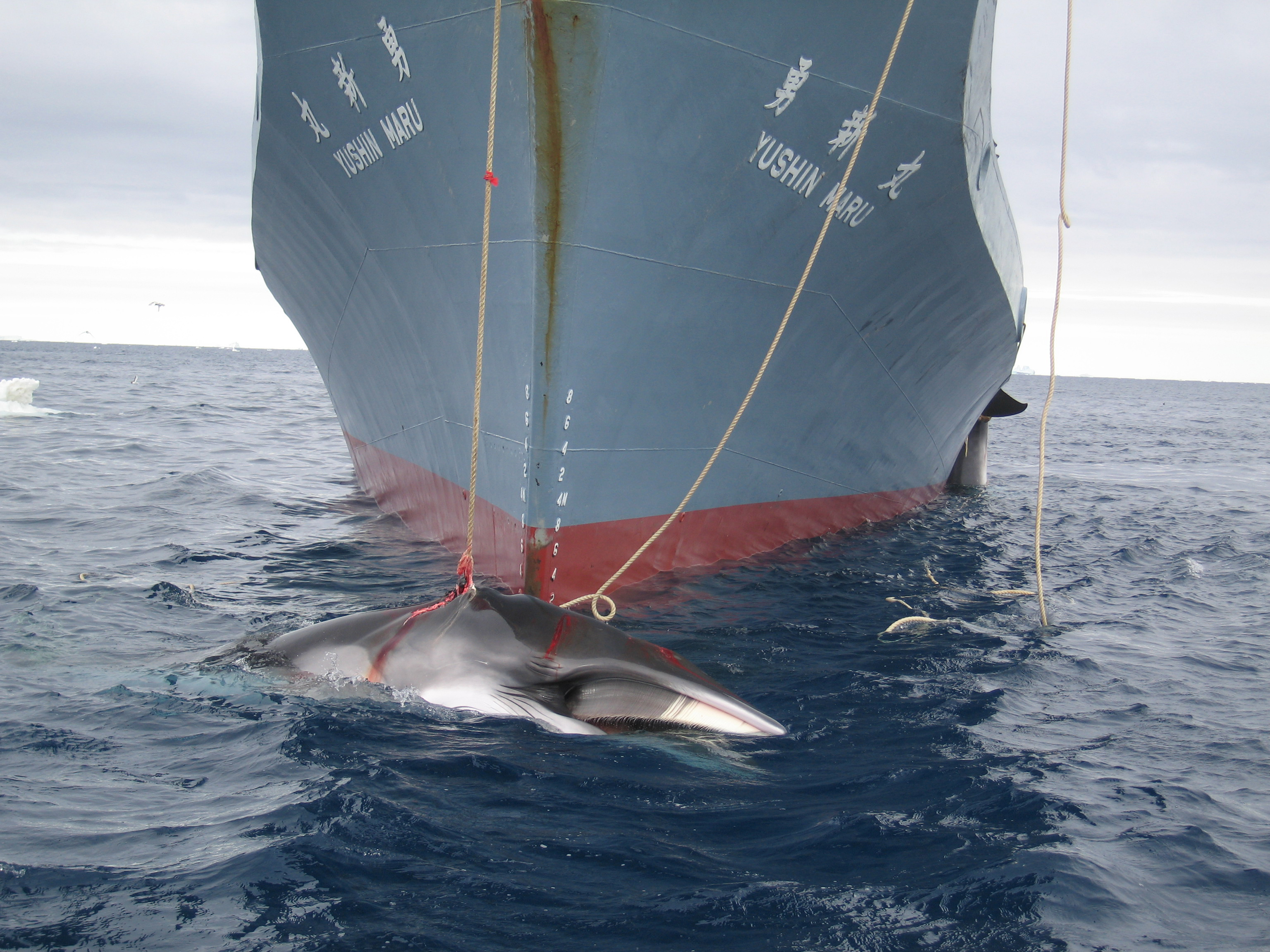Amid Controversy, Japanese Whaling Ships Return to Antarctic Ocean

Japan sent two whaling ships back to Antarctica's Southern Ocean today (Dec. 1) after a one-year hiatus, resuming seasonal whale hunts that have come under increasing scrutiny and censure from the international community.
Under a revised whaling plan, Japan proposes to kill 333 minke whales this year for research purposes — significantly fewer than past years' annual kill limit of 935 whales. Japan's Institute of Cetacean Research (ICR), which oversees the country's whaling program, stated on its website that researchers will study the whales' fish consumption and measure their competition with fisheries, creating ecosystem models for managing marine resources. "The purpose of Japan's research is science — science that will ensure that when commercial whaling is resumed, it will be sustainable," ICR claimed on its website.
However, statements from environmental officials in Australia and the United States express skepticism that killing any whales is necessary for data collection.
Greg Hunt, Australia's minister for the environment, said in a statement that the Australian government "strongly opposes" Japan's decision to return to the Southern Ocean to hunt whales. He added that the International Whaling Commission's (IWC) Scientific Committee put forward "significant questions about the science underpinning Japan's new whaling plan, [called] NEWREP-A, which are yet to be satisfactorily addressed." [To Protect Whales, US Diplomacy Needs Teeth (Op-Ed)]
From the U.S., Russell F. Smith III, deputy assistant secretary for international fisheries at the National Oceanic and Atmospheric Administration and U.S. commissioner to the IWC, expressed similar concerns. "Japan had not justified the need for lethal whaling to carry out its research," he said in a statement. "Unfortunately, rather than giving itself time to modify its research program to fully address these issues, Japan has decided to restart its program now."
Exception to the rule
Commercial whaling conducted by most countries ended decades ago, following a 1986 ban issued by the IWC, a global organization empowered to manage whaling industries, evaluate threats to whale populations and oversee conservation.
Sign up for the Live Science daily newsletter now
Get the world’s most fascinating discoveries delivered straight to your inbox.
But the IWC permits whaling in international waters if the hunt is conducted for research purposes. Soon after the 1986 ban, Japan launched its scientific whaling program, conducted by the Institute of Cetacean Research. According to the IWC's guidelines for the research permits, the Institute of Cetacean Research is allowed to process byproducts of the whaling program, such as whale meat, and sell it for consumption.
In 1994, the IWC designated the Southern Ocean as a whale sanctuary, but Japanese officials claimed that their research program provided exemption, even in the newly protected area. The hunts continued, and approximately 14,000 whales were killed between 1986 and 2014, according to the International Fund for Animal Welfare.
Going to court
Australia has long been a vocal critic of Japanese whaling, and in 2008, the country successfully banned Japan's whaling fleets from the Australian Whale Sanctuary in Antarctica. In 2010, Australia went even further, bringing action against Japan in the International Court of Justice to halt the scientific whaling program in its entirety. In 2014, Australia appeared to win a significant victory, as the International Court of Justice found that Japan's "scientific" research failed to meet the standards laid out by the IWC, and the court ordered a halt to the whaling.
In spite of the ruling, Japanese whaling vessels Yushin Maru and Yushin Maru No. 2 departed from Shimonoseki Port for the Southern Ocean. Two more ships are scheduled to join them, bringing the total number of crewmembers on the whaling mission to 160. Their work is scheduled to begin later this month, though not without close scrutiny on the global stage.
"The United States will continue to engage with the Government of Japan in an effort to address U.S. concerns with Japan's new lethal research program," Smith said. "We believe all of Japan's primary research objectives can be met through nonlethal activities and continue to oppose their scientific whaling programs."
Follow Mindy Weisberger on Twitter and Google+. Follow us @livescience, Facebook & Google+. Original article on Live Science.

Mindy Weisberger is an editor at Scholastic and a former Live Science channel editor and senior writer. She has reported on general science, covering climate change, paleontology, biology and space. Mindy studied film at Columbia University; prior to Live Science she produced, wrote and directed media for the American Museum of Natural History in New York City. Her videos about dinosaurs, astrophysics, biodiversity and evolution appear in museums and science centers worldwide, earning awards such as the CINE Golden Eagle and the Communicator Award of Excellence. Her writing has also appeared in Scientific American, The Washington Post and How It Works Magazine. Her book "Rise of the Zombie Bugs: The Surprising Science of Parasitic Mind Control" will be published in spring 2025 by Johns Hopkins University Press.









